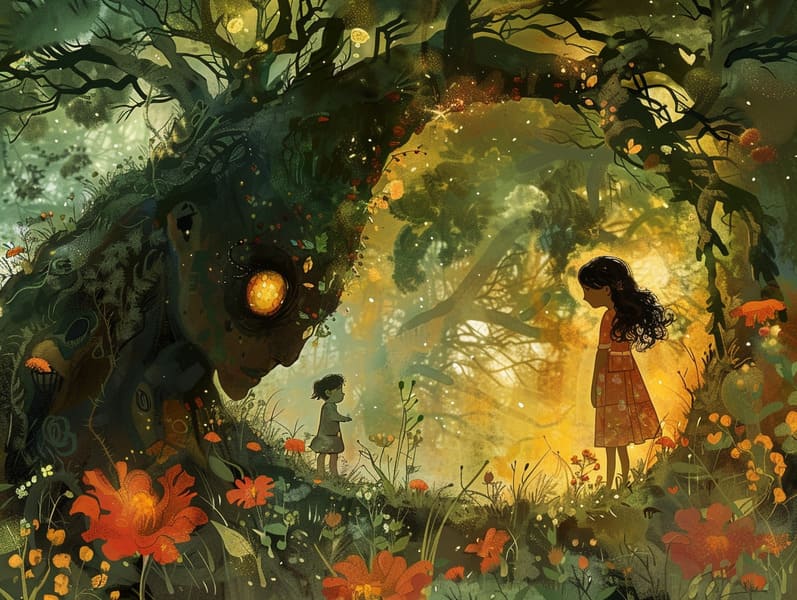
Timeless fairy tales have historical significance. These stories have been shared from one generation to the next far before they were ever inscribed. They originated from a variety of cultures, including African traditions. They were initially transmitted among older generations, often carrying themes and messages relevant to the societal norms and beliefs of the time.
Jacob and Wilhelm Grimm, Jacob and Wilhelm (the Grimm brothers), were among the first to collect and release many of these beloved tales. Their volume, "Grimm's Story Collection," included stories like "The True Bride," "The Story of Hansel and Gretel," and "Schneewittchen," which have since become hallmarks in the world of iconic fairy tales. Similarly, Andersen's fanciful narratives, such as "The Story of the Little Mermaid," and "The Ugly Duckling," have captivated hearts worldwide, solidifying their place in the pantheon of classic fairy tales.
Though they are centuries old, classic fairy tales remain as relevant as ever, especially as children's night stories. These charming stories are now available in numerous formats, including vividly illustrated books, captivating animations, and online storybooks.
Their ongoing significance can be ascribed to several fascinating points:
Valuable Lessons: Traditional fairy tales often offer important moral lessons. Narratives like "The Wolf and the Liar" teach the significance of honesty, while "The Tortoise and the Hare" demonstrate the benefits of persistence and unassuming nature. These tales offer young ones clear distinctions between correct and incorrect, building their moral compass in a kind yet impactful way.
Kindness and Comprehension: Traditional fairy tales frequently feature protagonists facing struggles and tests, inciting kids to empathize with their struggles and root for their triumphs. For instance, "Beauty and the Beast" teaches us the necessity of valuing inner qualities to appreciate the inner spirit of a being, enhancing compassion and discernment.
Cultural Awareness: Many traditional fairy tales are imbued with the cultural contexts from which they originated. Exploring these tales can provide informative snapshots into different traditions, fostering a sense of world understanding and respect.
Fantasy and Imagination: The mythical elements in old fairy tales—wizardry and magic—encourage children’s creative minds. These narratives guide readers to extraordinary realms, inspiring creative ideas and a sense of fascination that continues a lifetime.
Old fairy tales are not only magical but also edifying. They serve as mesmerizing tools in enhancing various thinking and feeling skills in kids. When fairy tales are told out loud, they foster verbal skills by teaching new phrases and elaborate sentence structures. This practice also improves auditory skills and attention, as young ones stay focused, looking forward to see what happens next.
Furthermore, debating the themes and characters of traditional fairy tales can promote reasoning skills and evaluative skills. Little ones are taught to discover patterns, foresee events, and understand cause and effect. These contemplations also further the young verbalize find it here their thoughts and feelings, advancing their emotional intelligence.
In today’s technological era, the existence of online fairy tales has made these tales more accessible than ever. Online platforms and apps feature vast collections of old fairy tales that can be read or heard anytime, anywhere. Fairy tales narrated are particularly well-received, presenting an delightful method for kids to be a part of these mesmerizing stories. Audiobooks and voiced videos carry characters and settings to life, often enhanced by spellbinding background sounds and instrumentals that heighten the narrative journey.
The timeless allure of ancient fairy tales lies in their ability to alter to new eras while staying true to their central values. Contemporary modernizations of these fairy tales often include more inclusive characters and modern settings, making them pertinent to today’s audience. However, the basic principles of heroism, warmth, and truth remain unchanged, continuing to touch listeners of all ages.
Traditional fairy tales also offer a sense of ease and understanding. They bestow a coherent narrative with a unmistakable beginning, middle, and end, often ending with the resolution of conflicts and the triumph of good over bad. This assuredness can be placating for kids, gifting a sense of solidity in an constantly changing world.
Ancient fairy tales continue to mesmerize and inform new generations, maintaining their splendor and pertinence in modern society. As children's night stories, they highlight a perfect blend of delight and instruction, furthering moral values, empathy, and creativity. The prevalence of digital fairy tales and the well-received status of fairy tales read aloud secure that these classic stories remain reachable to new generations.
By preserving and distributing these fairy tales, we continue to admire the rich tapestry of folklore and cultural heritage. Whether you are delving into a colorful picture book, perusing a online collection, or listening through an spoken story, the delight of bedtime fairy tales is always within reach. These tales convey of the continued nature of tales and its ability to draw us together across generations and cultures.
Whether you are delving into a beautifully illustrated book, discovering a web collection, or listening to an read-aloud book, the magic of Grimm's fairy tales is always within reach.
These tales convey of the timeless essence of narratives and its ability to connect us across time and space, casting a charm that enchants and educates alike.